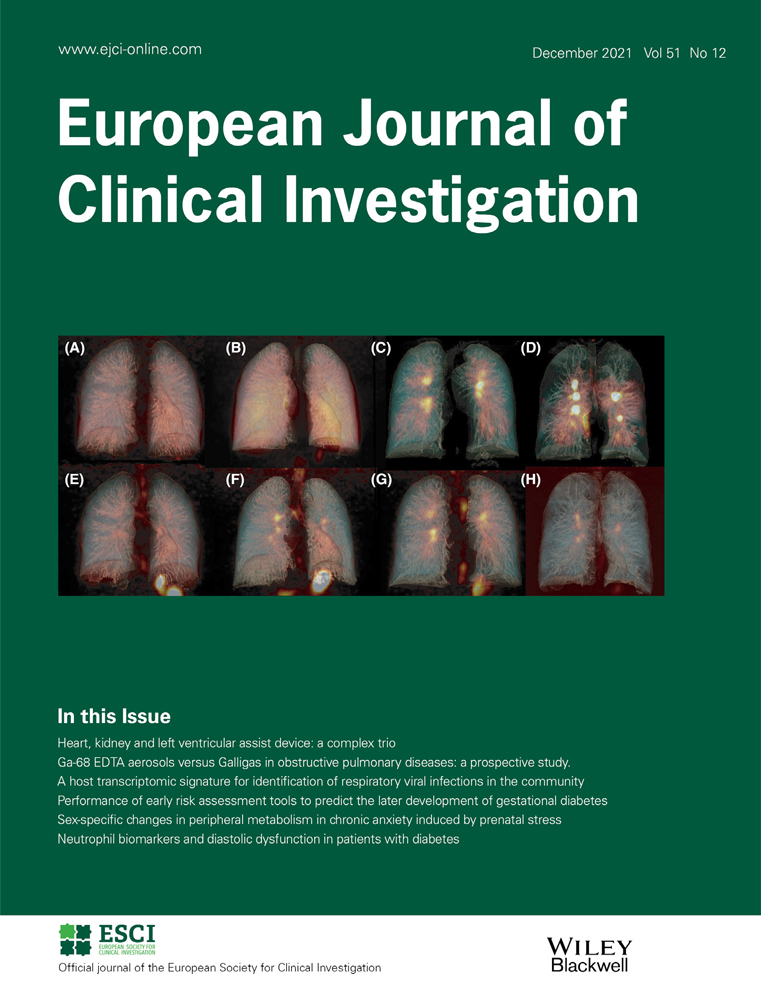Prognostic value of haemoglobin drop in patients with acute coronary syndromes
Funding information
Supported by a grant (FKZ 81X1600501) from the German Center for Cardiovascular Research and the Deutsches Herzzentrum München, Germany.
Abstract
Background
The prognostic value of in-hospital haemoglobin drop in patients with acute coronary syndrome (ACS) undergoing invasive therapy remains insufficiently investigated.
Materials and Methods
This observational study included 3838 patients with ACS with admission and in-hospital nadir haemoglobin values available. Haemoglobin drop was defined as a positive difference between admission and nadir haemoglobin values. The primary endpoint was one-year all-cause mortality.
Results
In-hospital haemoglobin drop occurred in 3142 patients (82%). Patients were categorized into 4 groups: no haemoglobin drop (n = 696 patients), <3 g/dl haemoglobin drop (n = 2703 patients), 3 to <5 g/dl haemoglobin drop (n = 344 patients) and ≥5 g/dl haemoglobin drop (n = 95 patients). The primary endpoint occurred in 156 patients: 17 patients (2.5%) in the group with no haemoglobin drop, 81 patients (3.0%) in the group with <3g/dl haemoglobin drop, 37 patients (10.9%) in the group with 3 to <5 g/dl haemoglobin drop and 21 patients (22.2%) in the group with ≥5 g/dl haemoglobin (adjusted hazard ratio [HR] = 1.30, 95% confidence interval 1.17 to 1.45; p < .001 for one g/dl haemoglobin drop). The association of haemoglobin drop with one-year mortality remained significant after exclusion of patients with in-hospital overt bleeding (adjusted HR = 1.27 [1.11–1.46]; p < .001 for one g/dl haemoglobin drop). The lowest haemoglobin drop associated with mortality was 1.23 g/dl in all patients (HR = 1.03 [1.02–1.04]) and 1.13 g/dl in patients without overt bleeding (HR = 1.03 [1.01–1.04]).
Conclusions
In patients with ACS, in-hospital haemoglobin drop was associated with higher risk of one-year mortality even in the absence of overt bleeding.
CONFLICT OF INTEREST
Dr Neumann reports lecture fees, paid to his institution, from Amgen, Daiichi Sankyo, Novartis, and Ferrer; lecture fees, paid to his institution, and consulting fees, paid to his institution, from AstraZeneca and Boehringer Ingelheim; grant support, and lecture fees, paid to his institution, from Pfizer, Biotronik, Edwards Lifesciences, Bayer HealthCare and GlaxoSmithKline; and grant support from Medtronic, Abbott Vascular and Boston Scientific. Dr Joner reports receiving personal fees from Biotronik, OrbusNeich, AstraZeneca and Recor; grants and personal fees from Boston Scientific and Edwards; and grants from Amgen. Dr Schunkert reports personal fees from MSD Sharp & Dohme, Amgen, Bayer Vital GmbH, Boehringer Ingelheim, Daiichi-Sankyo, Novartis, Servier, Brahms, Bristol-Myers Squibb, Medtronic, Sanofi Aventis, Synlab, Pfizer and Vifor, as well as grants and personal fees from AstraZeneca. The other authors report no conflicts.




